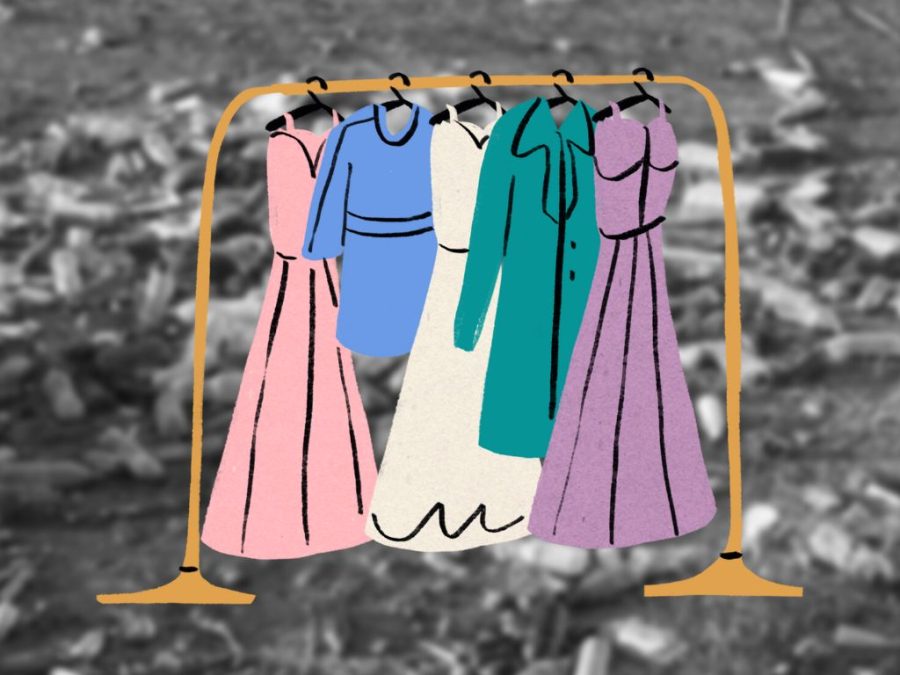Fast fashion: Not worth the “speed”
February 3, 2023
Fast fashion can be described as cheap clothing items that follow current trends and take a lot of inspiration from catwalk and designer brands or what celebrities are wearing. A few examples of fast fashion brands are H and M, Shein, BooHooMan, FashionNova, Forever 21 and Uniqlo. They have good products that are worth your money such as the 8-10 dollar t-shirts at H and M or some of the brand collaborations at Uniqlo. These may seem good at a surface level but it has more of an effect on fashion culture, workplaces and the environment.
The environmental impact that Fast fashion has is surprisingly high. It sucks up many resources, including water. It takes approximately 700 gallons of water to produce a cotton t-shirt and up to 2000 gallons to produce a pair of jeans. The excess dyed water is also often dumped into ditches,streams or rivers, contributing to an already high water pollution rate. Microplastics are also a huge issue in the industry. Brands often use polyester, nylon and acrylic which take hundreds of years to biodegrade. In an article from Earth.org, they say that “A report done from the International Union for Conservation of Nature (IUCN) estimated that 35% of microplastics in the ocean come from the laundering of synthetic textiles like polyester.
Fast fashion companies work through many unethical practices like poor working conditions and wages. Many of these companies get their products from asian countries, particularly developing asian countries like Bangladesh, Indonesia and the Philippines. They work in these countries because of the lack of labor laws and human right protection laws so they can get away with these unsafe and unethical work practices. These factory workers are paid below minimum wage and work extreme hours in unsafe conditions. The hours the workers work on farms or garment factories can exceed 100 hours a week. The workers are also mistreated and even abused in the factory. Verbal abuse is common but sexual abuse also occurs. They are pressured to work overtime hours, drink dirty water and even are pressured to not use the restroom. Fast Fashion is also responsible for a large amount of child labor in factories. Countries like Bangladesh, China, The Philippines and Indonesia. These children are stripped of an education and forced to work in these factories to keep up with the large supply demands that these brands ask for.
Fast fashion brands also affect the fashion industry and brands in it. Since they have low prices and high production rate, they often get more sales rather than a brand that will make a good quality product. In my own experience I have noticed that these Fast Fashion brands have low quality products. I recently bought a nice quality t-shirt for around 25 dollars and it will last me years while I could have bought a shirt made of a different material from H and M for 8 dollars, and this price difference is often what consumers look at. The Fast Fashion Industry affects the view of other companies as well. Many people would rather pay 8 dollars for a tshirt but when they see a good quality shirt for 20 dollars they think that the company is charging too much while that is around the regular price for a tshirt. This is harming other companies because it makes them seem like they are overcharging and drives business away because of the fast fashion brands extremely low prices.
In general, people should stop shopping at fast fashion brands because of the ethical harm done to the individuals that made the clothes you’re wearing and the direct pollution done to the environment. Things you can do to combat this is buy good quality clothing that you won’t have to throw away very often, donate clothing, and stop buying from Fast Fashion brands. Step away from the price and look at the product.










